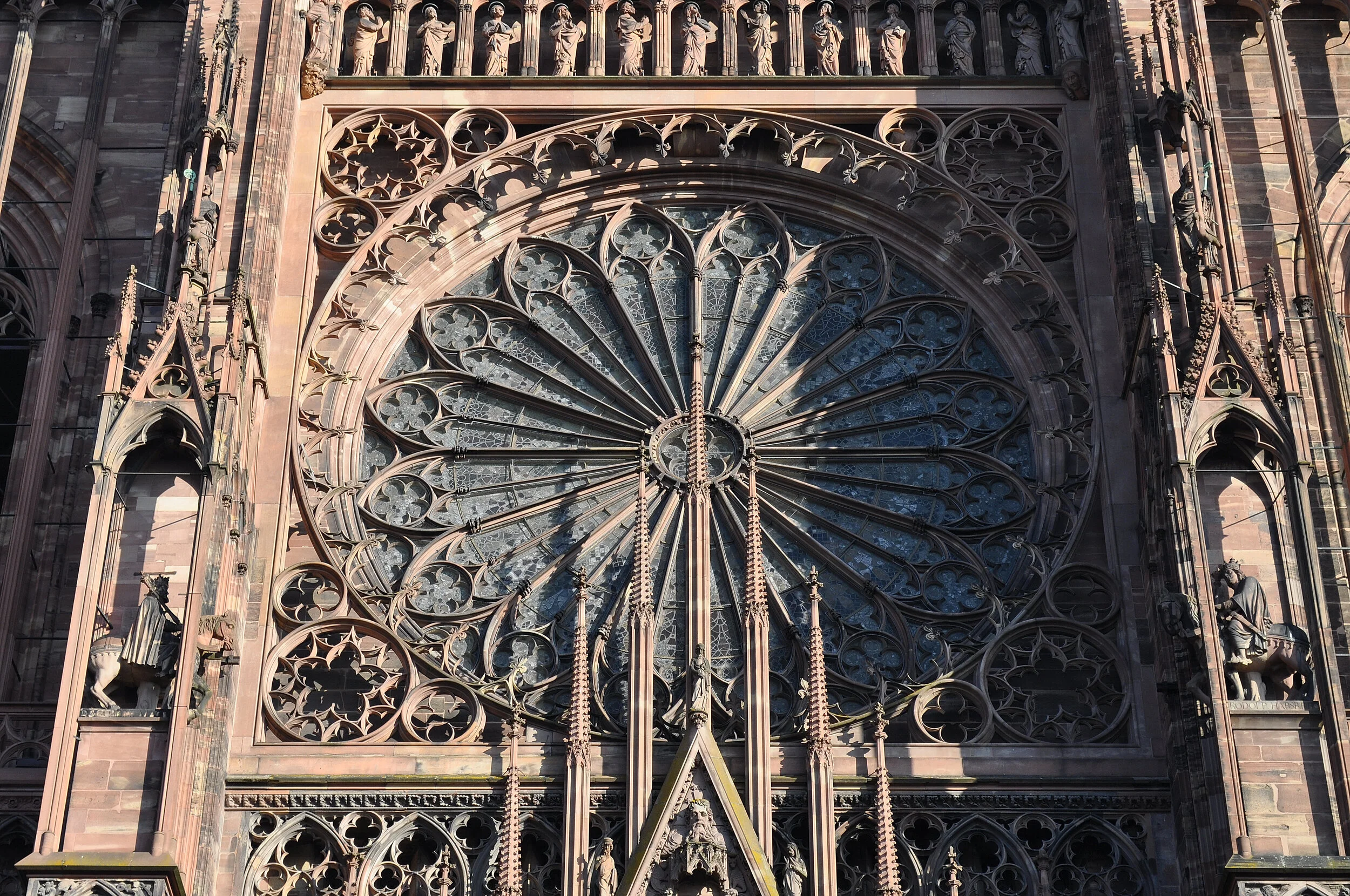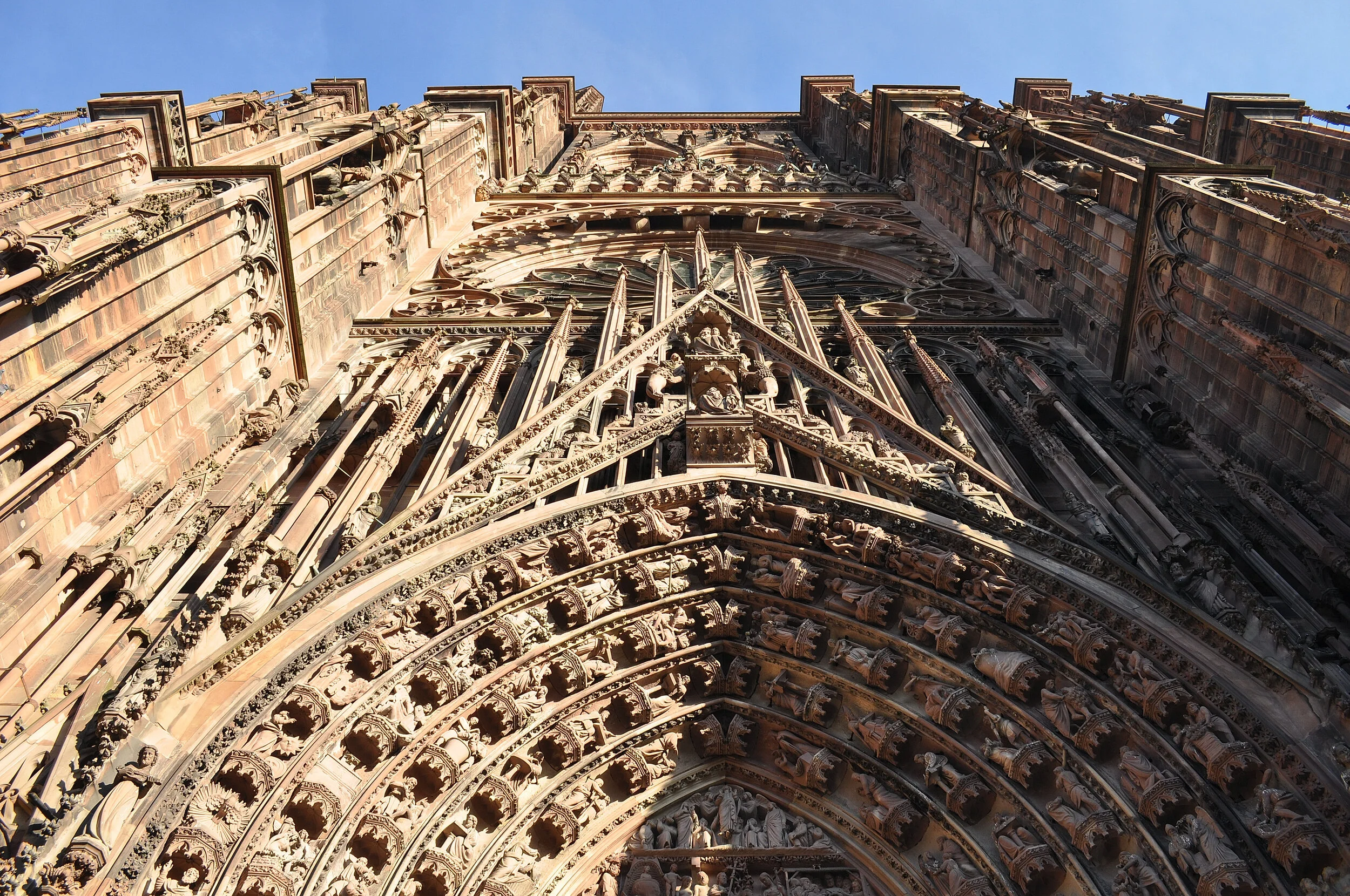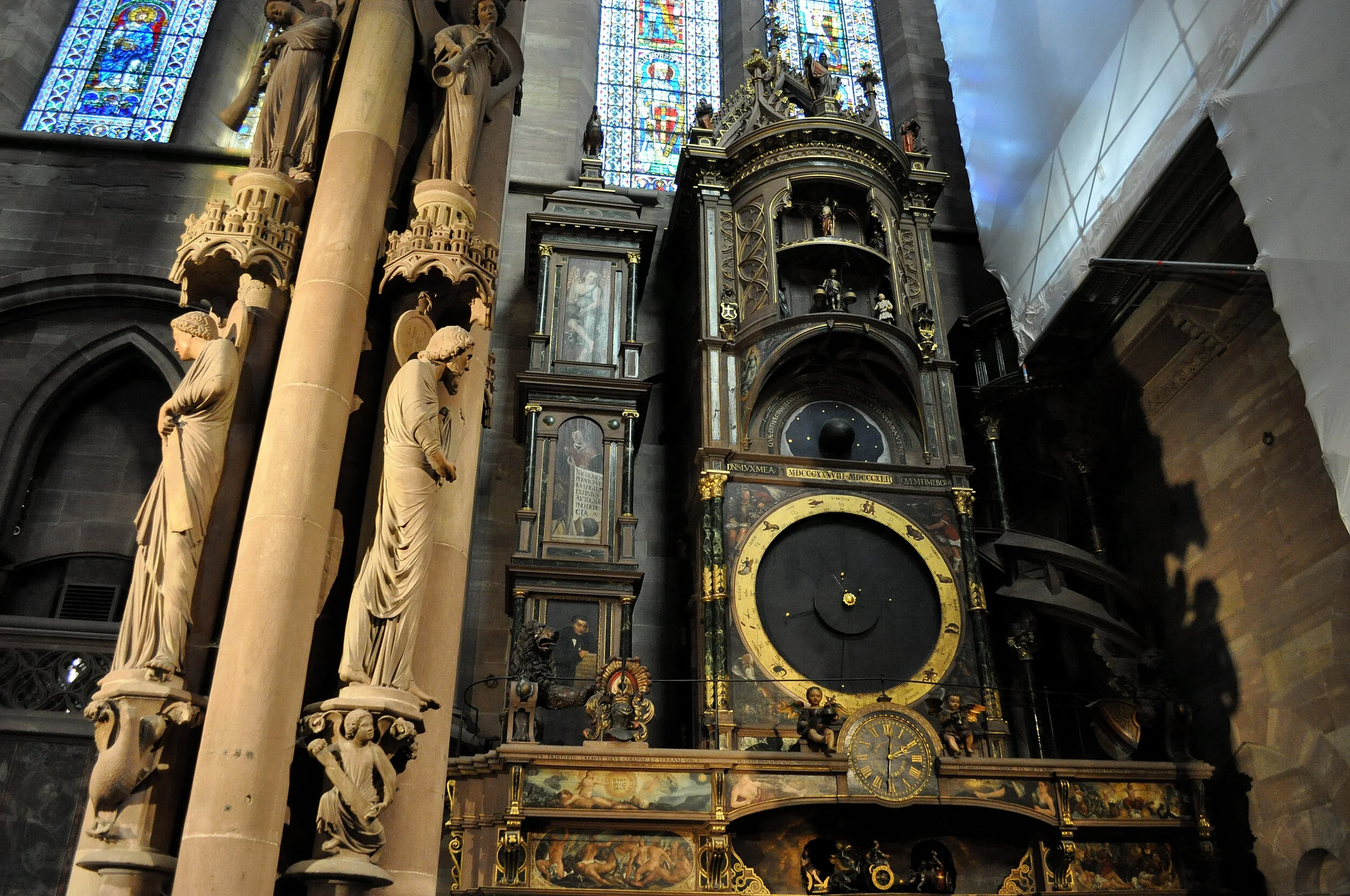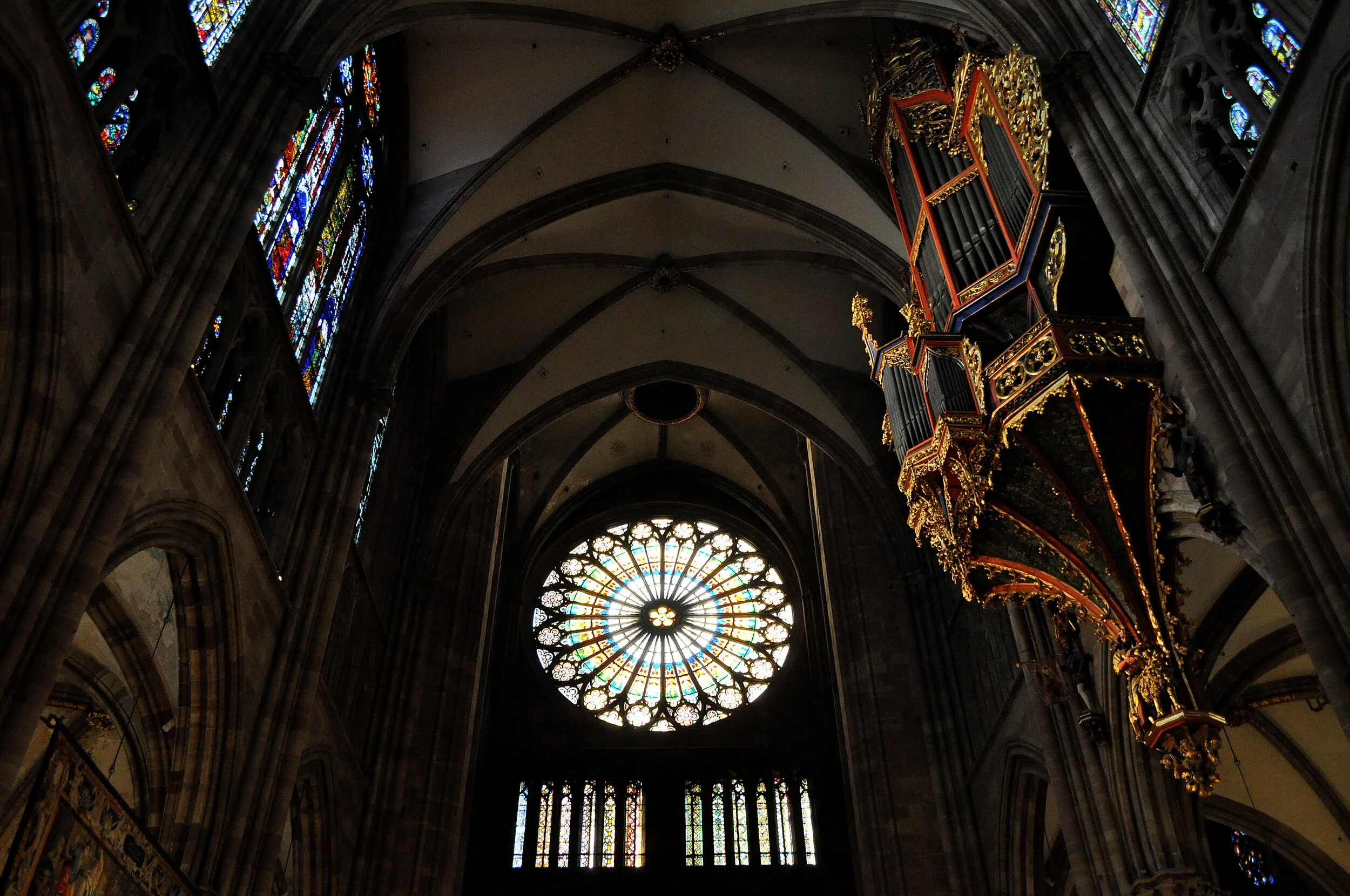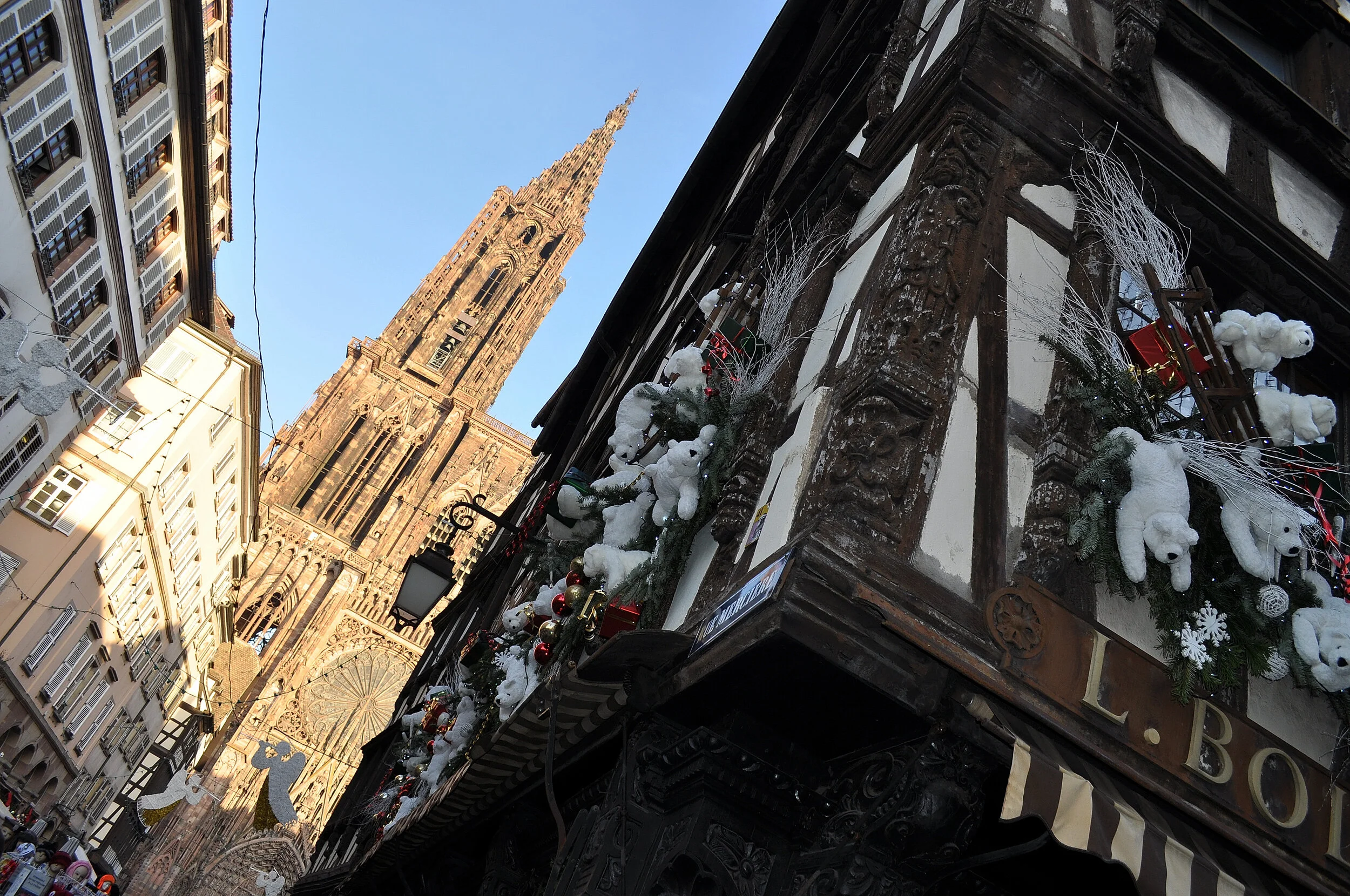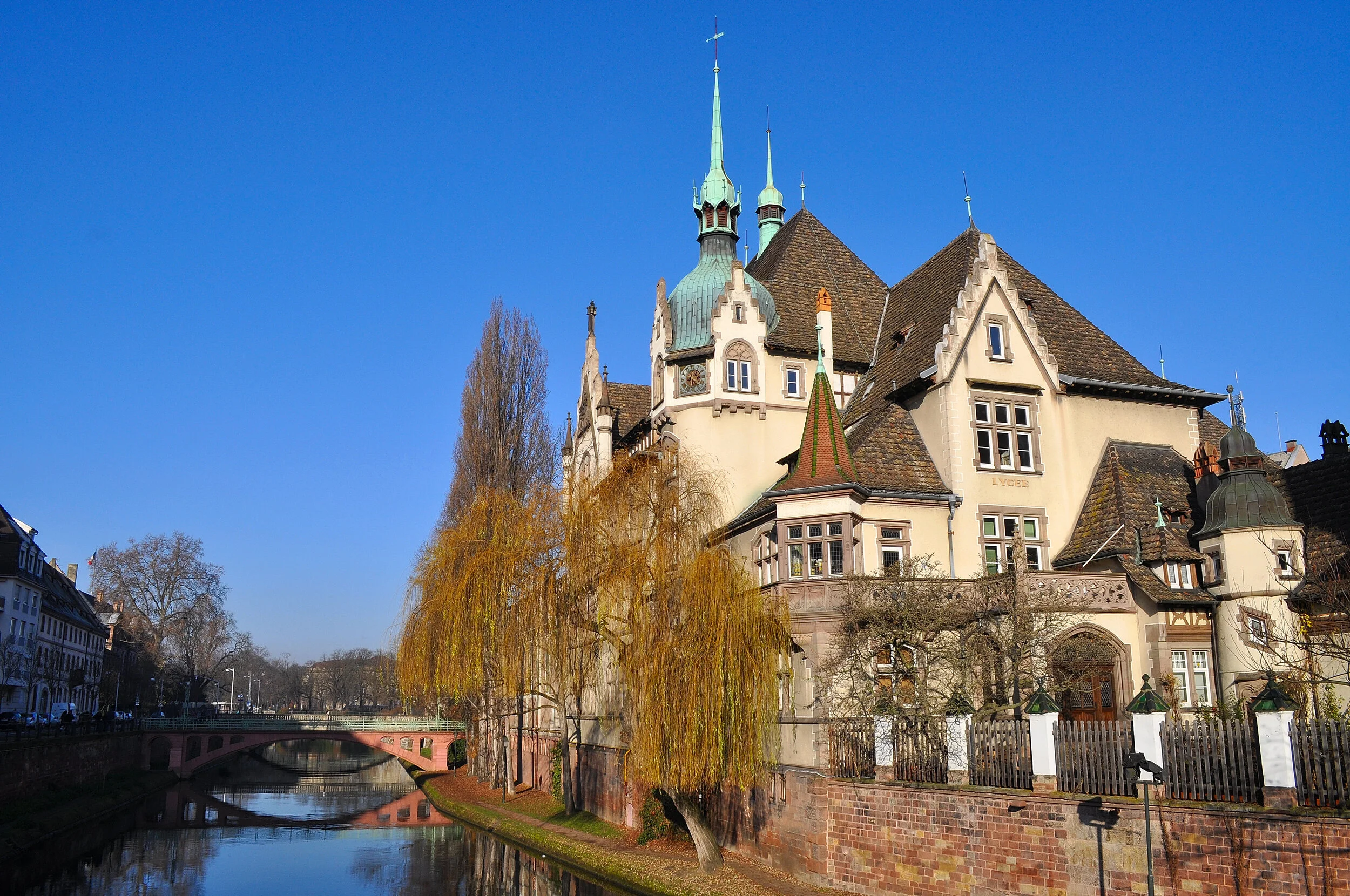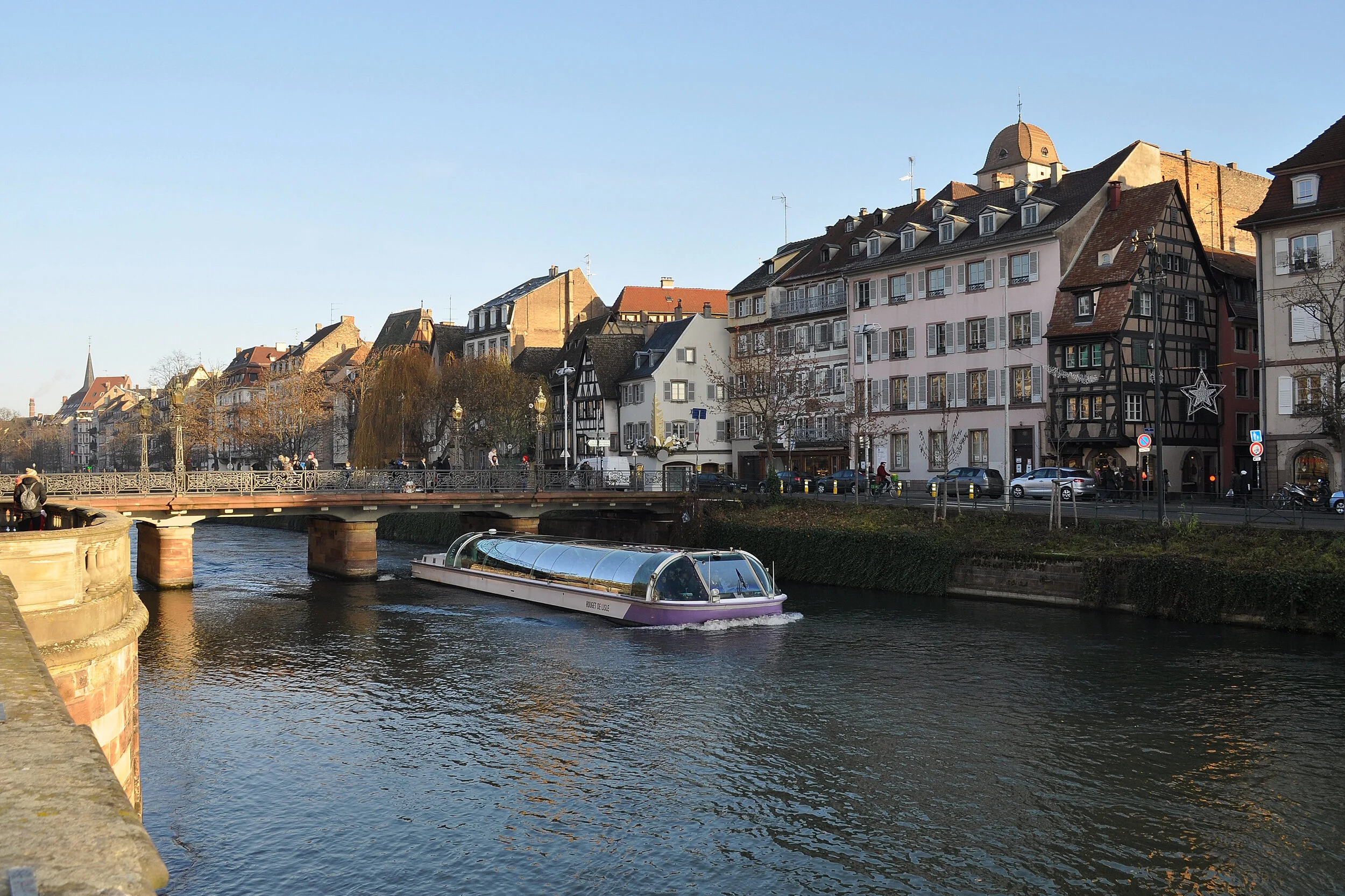The wonders of Strasbourg
Piero: well rested, we wake up early in the freezing heart of the Black Forest.
Angela: seeing it again in daylight, the hotel perfectly fits the atmosphere of our trip! A typical building of this area, right in the middle of the woods—really nice! We have breakfast and are ready to get back into our van, with which we’ve now become quite familiar...
Piero: well rested, we’re starting relatively early again today: we have about 90 kilometers to cover to reach Strasbourg, which will take a little over an hour.
Angela: we cross the German-French border very quickly and immediately find ourselves in Strasbourg, Alsace.
Piero: due to its position very close to the border, Strasbourg is a bit French and a bit German. Historically contested, the city—originally a Roman camp called Argentoratae—was part of the German Empire for about 1000 years; in 1681 it passed to the French under Louis XIV, then back to the Germans after the Franco-Prussian War in 1870; Strasbourg was again annexed by France in 1919 and once more German during World War II. Probably because of its contested history, today Strasbourg is one of the symbols of a united Europe, which fought for centuries but has now found stability; Strasbourg is now one of the official capitals of the European Union, hosting the European Parliament, the Court of Human Rights, and the Council of Europe.
Angela: a curiosity: Piazza Argentina in Rome owes its name to Strasbourg’s ancient Roman name, Argentoratum. The square is named after the Torre Argentina, so called by Johannes Burckardt, Italianized as Burcardo, who was master of ceremonies for five popes from 1483 and was born in Strasbourg, so he liked to sign himself as Argentinus.
Piero: we start our visit after parking the van near the Church of St. Paul; it is a Protestant church located on the edge of the historic center of the Alsace capital, exactly in Eisenhower Square, at the confluence of the Ill River and the short Aar stream. It has two very distinctive spires reaching a height of 76 meters.
Angela: Strasbourg is indeed crossed by the Ill River and is actually made up of a series of islands, among which the most famous and largest is the Grande Île, declared a UNESCO World Heritage Site since 1988. It is the true historic center of the city and the place where you can admire the main monuments.
Angela: from here, we continue our walk towards the famous Christmas Markets, which in Strasbourg are a true institution: they were first established in 1570 and are renewed every year from late November until December 31, around the Cathedral and other sites in the city center. The city’s original beauty, combined with the decorations and ornaments, leads us into a fairytale atmosphere typical of the Christmas holidays.
Piero: the Chriskindelsmärik of Strasbourg, which is the Alsatian name for the Christ Child market, is truly one of the most charming in all of Europe: from Place Broglie to Place de la Cathédrale, from Rue de la Comédie to Place de la Gare and Place Klébler, hundreds of stalls overflow with colors, scents, and decorations of every kind; even the buildings dress up for the occasion, with facades covered in Christmas decorations. It is said that the tradition of decorating the Christmas tree originates right here in Alsace, where as early as the 1600s, people decorated fir trees with sweets, apples, or paper flowers.
Angela: a unique spectacle! After our first walk and after booking the entrance to the Cathedral and the boat tour (these are things you need to plan in advance, or you risk missing them), we enjoy a bit of rest in the warmth of one of the city’s typical French-style cafés. The local cuisine is a pleasant mix of German practicality and French refinement: an acceptable compromise, even if not exactly unforgettable…
Piero: in the early afternoon, we prepare for the city’s main attraction: the Notre-Dame Cathedral. It is one of the highest expressions of Gothic architecture in Europe, and its construction began shortly after the year 1000; some elements from that time are still visible, even though the cathedral was modified several times before being completed in 1878.
Angela: completed in the 15th century, the spire, with its 142 meters of height, made the cathedral the tallest building in the world until the 19th century, and it still remains the tallest building in Christendom. Alongside the spire, another key feature of the cathedral is certainly the large rose window on the main façade above the entrance, often described as a kind of Bible in stone for the extraordinary narrative and symbolic power of its sculptures, which depict scenes from the life of Jesus and other episodes from the Holy Scriptures. The interior of the cathedral is simple yet very spacious, with three standout elements: the stained glass windows, the astronomical clock from 1572—whose daily animation begins at 12:30 and illustrates the different stages of life and the parade of the apostles before Christ—and, just opposite it, the Pillar of Angels with its magnificent statues.
Piero: It’s not possible to reach or visit the highest point of the cathedral, but it’s definitely worth climbing up to the platform: after more than 300 steps, you’re rewarded with a unique panoramic view over the entire city and, on clear days, you can even see as far as Germany.
Angela: the square in front of the cathedral is without a doubt the beating heart of Strasbourg, and it is lined with some of the city’s most important buildings. The cathedral gives the square its name, but a true highlight is the Maison Kammerzell, the most beautiful house in Strasbourg, built by the wealthy cheese merchant Bronn atop a set of stone shops. Today, the house hosts one of Strasbourg’s most famous restaurants. On the corner stands the Pharmacy of the Stag, dating back to 1268, and considered the oldest pharmacy in France.
Piero: not far from here is Gutenberg Square, named after the inventor of the printing press, who lived in Strasbourg for ten years and to whom the statue at the center of the square is dedicated.
Angela: let’s head now towards the riverbank, where a wonderful boat tour awaits us at sunset. But before we get there, we pass by the Rohan Palace: originally a princely residence, it now houses three museums. Of course, we don’t have time to visit them all, but the impressive façade definitely deserves a photo!
Piero: we spend our last hour before the boat tour visiting the district known as La Petite France, perhaps the most picturesque and most visited area of Strasbourg. This is where craftsmen, tanners, fishermen, and millers once lived and worked, taking advantage of the canal waters. What they left us to admire are the beautiful half-timbered houses (the traditional buildings of this region with wooden frames) and the romantic alleys along the river.
Angela: as mentioned earlier, we end our visit to Strasbourg with a fantastic boat tour. The sunset makes the experience even more charming, allowing us to admire this wonderful city from the water and pass near the buildings of the European Union. The departure and arrival dock is just a short walk from the cathedral; the cost is affordable (about 10 euros per person, with discounts for children and teens) and there are several departures throughout the day.
Piero: after walking around ten kilometers throughout the day, we’re tired—it’s time to get back in our van and return to base. But what a wonderful experience it was in Strasbourg! A fantastic city that’s truly worth visiting!
Angela: another warm traditional dinner at the hotel, then straight to bed—tomorrow is our last day!







